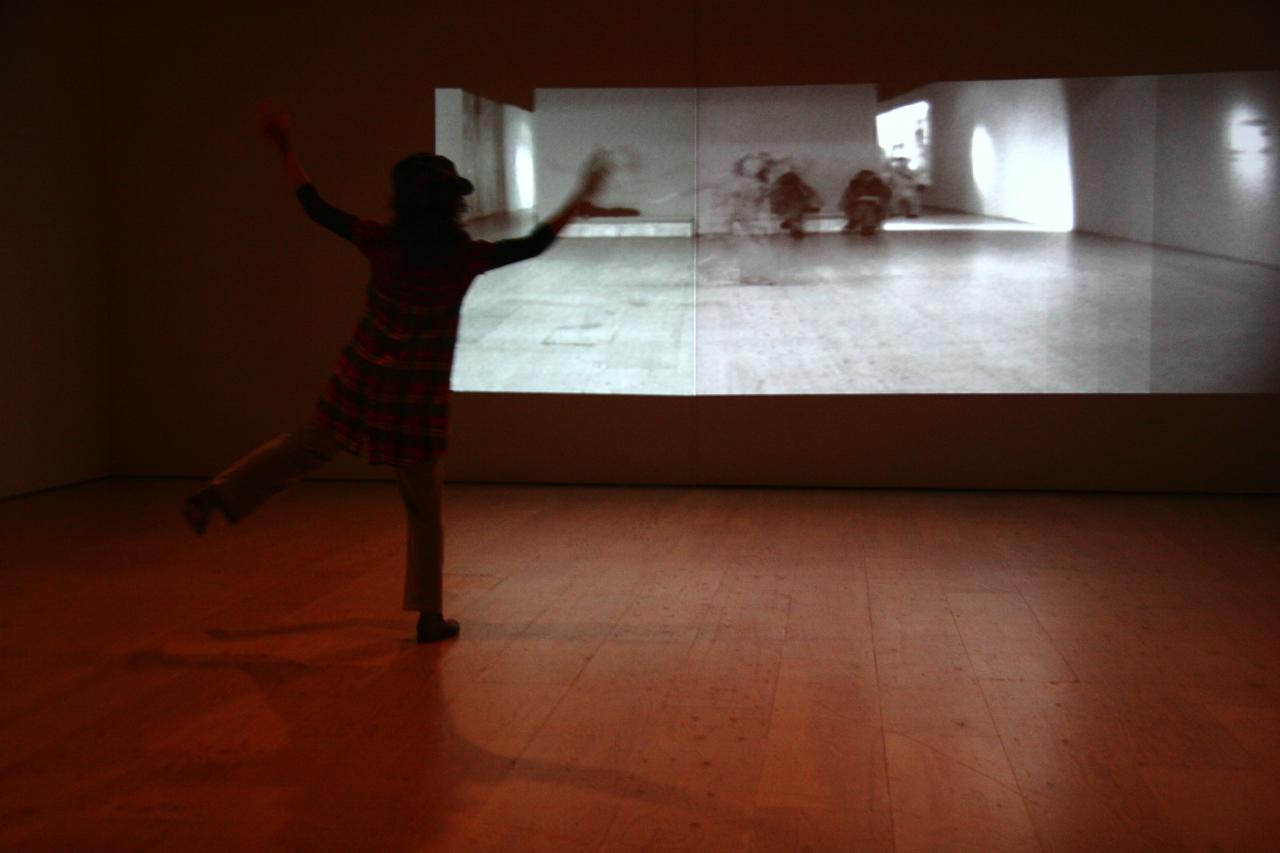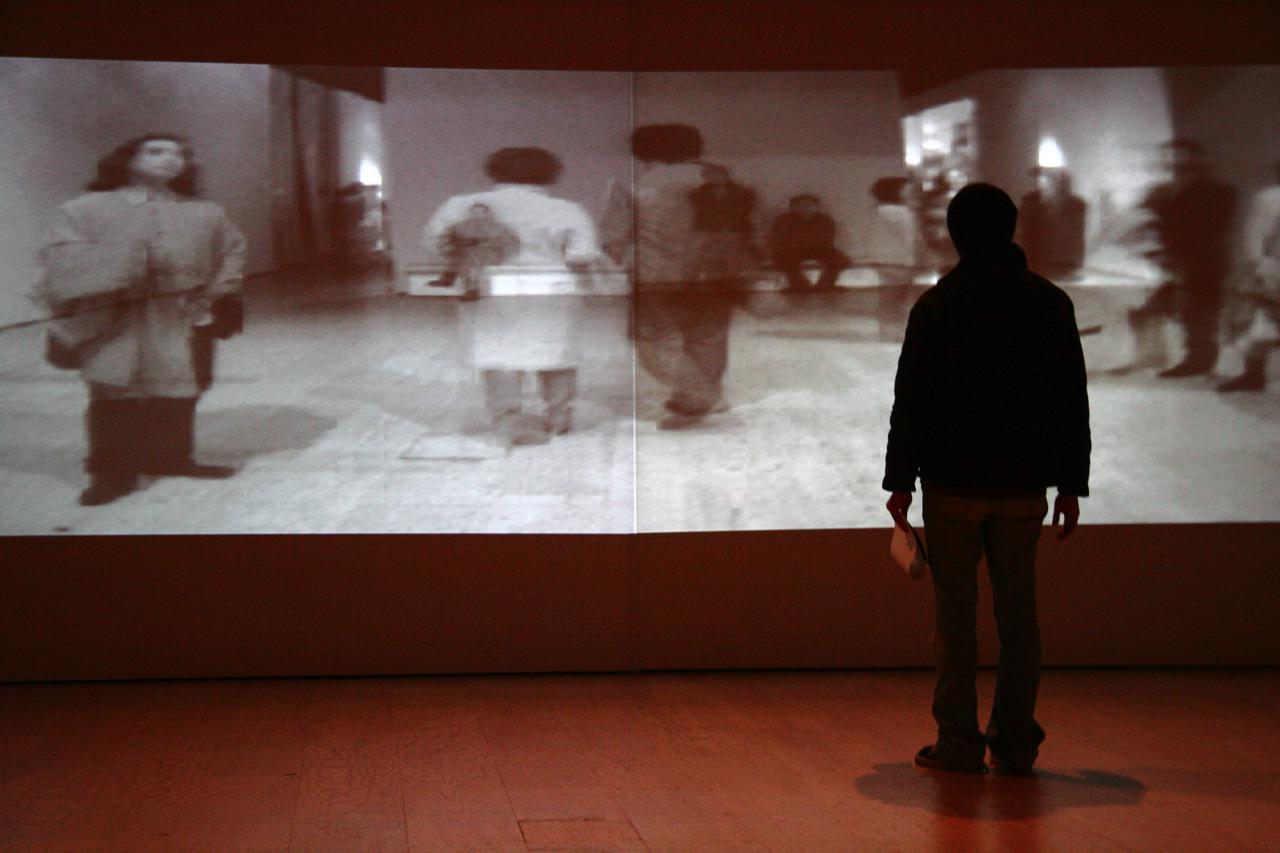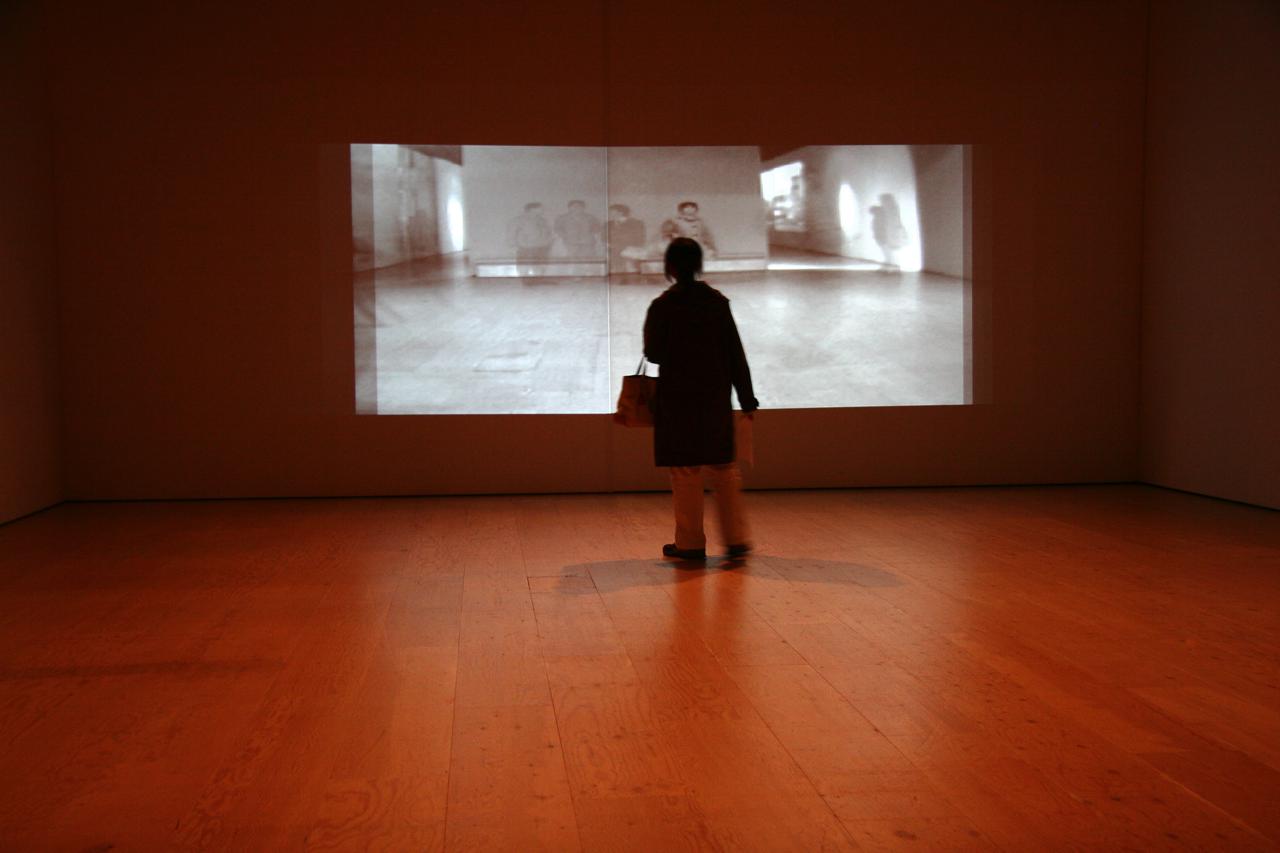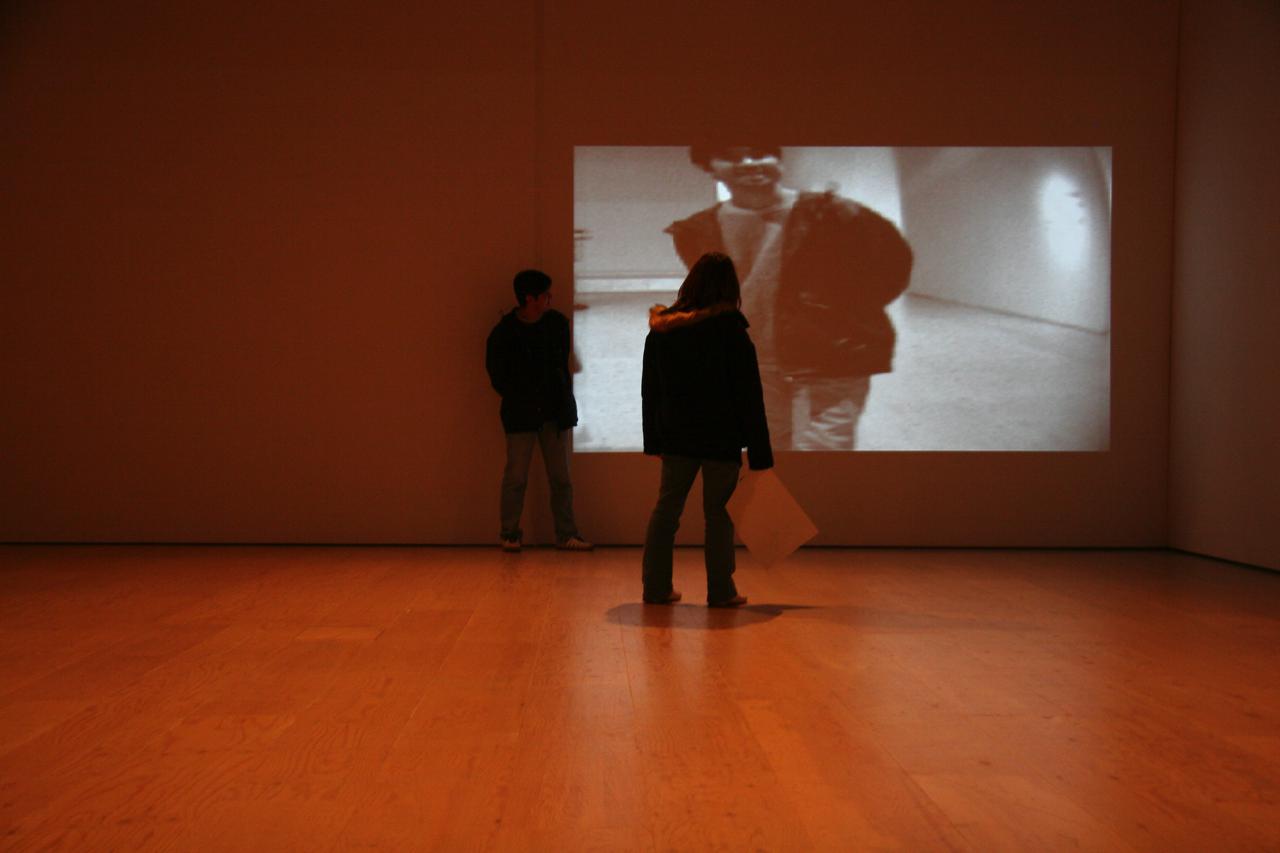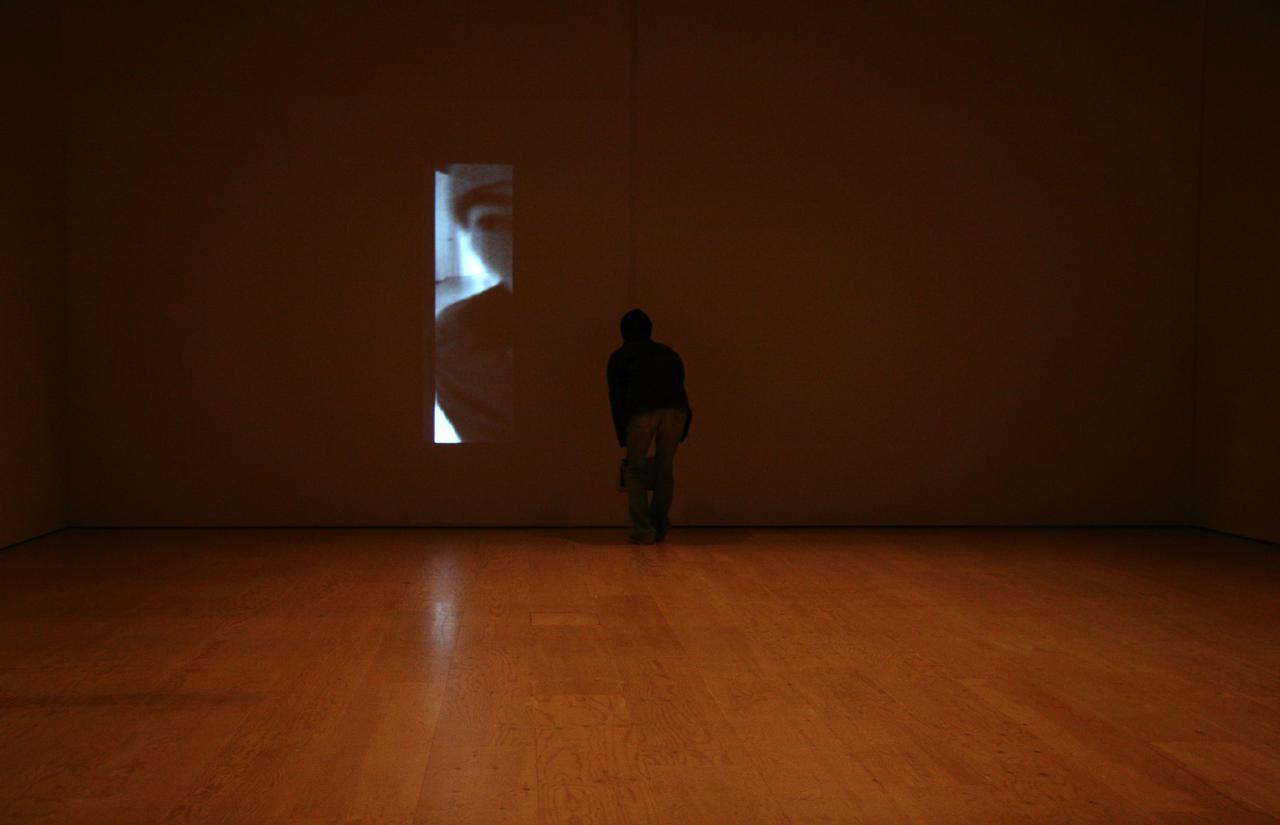Swarm
Overview
Alex Davies’ work Swarm (2003) uses captured images of the audience to create a dynamic live audio-visual environment. The captured images of the audience are projected using two data projectors to create a long narrow viewing field across one of the walls of the gallery. The projection acts as an uncanny video mirror where the audience sees images of themselves as well as images of previous exhibition visitors. There are three layers of video images: one taken in real time, the second drawn from the most recently captured footage and a third layer selected at random from the database. The video system transitions rapidly through the different layers so that images appear and disappear creating a shimmering translucent effect. Video reflections of the audience members are revealed by a moving mask or window that travels horizontally across the viewing plane where the phantom video avatars are projected. As the video mask moves across the space, the width of the window also dynamically changes, triggering a spatialised audioscape made up of ambient sounds, footsteps and murmuring voices. Over the period of the exhibition, the work accumulates thousands of video fragments in its database, any one of which may reappear days or even weeks after a particular individual or group has left the exhibition. The video phantoms appear, sometimes singly, sometimes in groups, providing a ghostly record of previous exhibition visitors eerily mingling in the same visual plane as the images of current visitors.
Cleland, K. (2006). Media Mirrors and Image Avatars. Engage: Interaction, Art and Audience Experience (2006), a CCS/ACID Symposium, Broadway NSW: Creativity and Cognition Studios Press, University of Technology Sydney.
Exhibitions
- Re:search / Art collaboration of Australia and Japan, Sendai Mediatheque, Japan, 2006
- 2004 Australian Culture Now, ACMI / NGV, Melbourne, Australia, 2004
- Helen Lempiere Travelling Arts Scholarship, Artspace, Australia, 2004
- Swarm, Artspace, Sydney, Australia, 2003
Detail
Mike Leggett comments regarding the work at the Interaction: Systems, Practice and Theory Symposium 2004
'Presence, Interaction and ‘data space’
'In Swarm (Alex Davies 2003) the projection system unrolls across a wide screen format (6 : 1) a series of vertical frames that mix images of figures with images of space, a representation of the space in which you stand. They flicker as the vertical frames are replaced, as if from some scanning mechanism, replacing what was here with what is there, now – yourself, your companions, replaced again, in different frames, by strangers, whose images were probably captured and stored on some earlier visit. The visual rhythms are heard and change in pitch and volume as the greytone densities vary to the pulse of the picture as it sweeps across the wall from left to right. You, the visitor, move towards and away from the spectres on the wall, looking as you do, for the precise location of the tiny lens poking through the screen. This camera can form images where light is scarce, such as in the darkened space of this provisional cinema. They trade your image for your inclusion in the mystic writing pad of the palimpsest into which you have entered. The data space is constantly provisional, always in flux, your presence now absent, a previous presence now present. The space becomes charged with time.'
